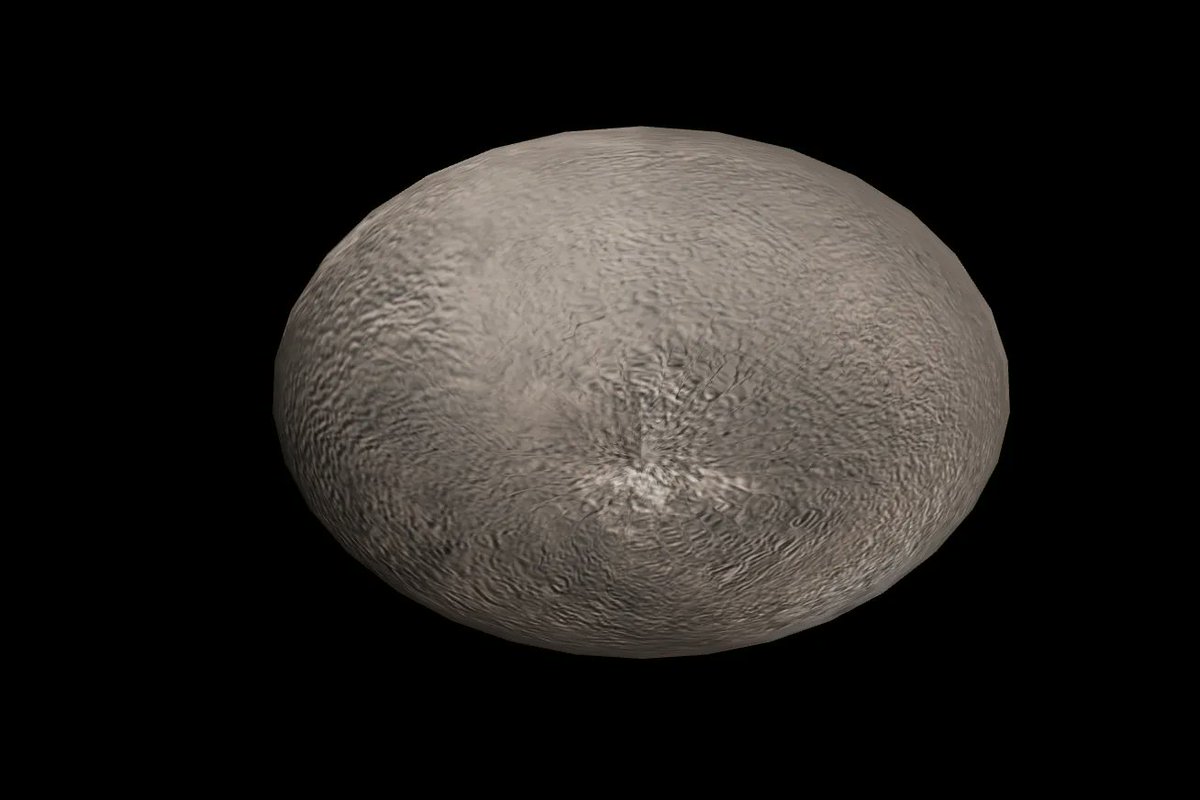There’s still a raging debate in some circles as to whether Pluto should be a planet or not. Ask an astronomer, and their typical answer would be something like – if Pluto is a planet, then there are plenty of other bodies out there in the solar system that should be considered one too. One of those is Haumea, a little explored rock in the Kuiper belt that is one of the strangest large objects out there. Now, a team from NASA has a new idea as to how it got that way.
Since Haumea is so far away, there isn’t much hard data on it. A probe has never visited it, and it is too small and distant to be properly measured by an Earth-based telescope. So the researchers interested in it turned to that favorite tool of most astrophysicists – computer models.
Computer models need inputs to make predictions, however, and there are a few bizarre things that we already know about Haumea. One is how fast it spins – a day lasts only four hours on its surface, much shorter than the day of any similar-sized object in the solar system. In addition, it is elongated, looking a bit like an American football rather than the spherical shape that most bodies of its size take on.
Credit – Lunar and Planetary Institute
It also has some attending “family” – little balls of what appears to be water ice that float in a similar orbit around the main body of Haumea. Kind of like moons, but not considered to be such. So how did all of this strangeness come to be? To understand, the researchers had to look back in time – and make some estimates, of course.
That was a two-step process. First, Jessica Noviello, now a postdoc researcher at NASA’s Goddard Space Flight Center, developed a model requiring only three distinct inputs – Haumea’s size, mass, and spin rate. The outputs of that first model, such as the size and density of the body’s core, were then fed into another model that was used as the iterative basis for finding a creation process that reflected what Haumea looks like now.
Introducing small changes to those input parameters of the final simulation resulted in a set of expected outcomes, which could be compared to the measured reality. But it also highlighted a few interesting features that likely happened when Haumea was being formed.
Credit – Anton Petrov YouTube Channel
First, it was likely smacked by a massive object early in its history. Hence, the dramatic spin. But, while the impact would have knocked parts of Haumea off, it likely would have been too violent to simply form the small balls of ice now known as its “family.”
Creating those tiny ice balls required a second process, which took much longer, but arguably had as big of an impact. The fast spinning caused denser rocks to slide down into the core of the dwarf planet, and those rocks started to do something unexpected. Since they, like all rocks, were radioactive, they started to melt the water ice that was coagulating on Haumea’s outer shell.
Some of that water then flooded into the core, creating a clay-like substance, which the fast centripetal force then spun out like a potter, creating the elongated shape we see today. In addition, some of the balls of ice lost their grip on the main body and broke off gently to form the smaller icy bodies that still rotate in the same orbit as the parent dwarf planet.
These outcomes are all from simulations at this point, but they make sense both from a logical and scientific standpoint. However, it will still be a while before we collect any more concrete data about Haumea or its Kuiper belt cousins. Until then, astrophysicists will have to be content with papers like the one from Dr. Noviello and her team that was recently published in the Planetary Science Journal.
Learn More:
NASA – NASA Studies Origins of ‘Weird’ Solar System Object: Dwarf Planet Haumea
Noviello et al. – Let It Go: Geophysically Driven Ejection of the Haumea Family Members
UT – The Dwarf Planet Haumea
UT – Dwarf Planet Haumea Has a Ring
Lead Image:
Screenshot of an interactive 3D model of Haumea.
Credit – NASA Visualization Technology Applications and Development

